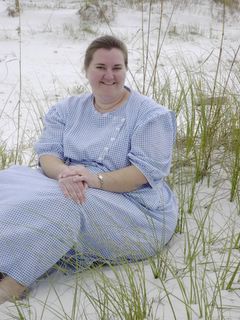Student update
Well, I'm once again a student. And once again, I'm wondering what in the world makes me think I can do this! I must say, I'm thankful I took Chemistry at Western even if it only transferred as an elective. My Chemistry professor at WKU eplained things. My Chemistry professor at UTC just says things and assumes you know what he's talking about. He jumps from atoms to molecules to elements to homogeneous compounds to heterogeneous compounds with very little pause. Fortunately, I know what he's talking about because I had to thoroughly memorize every detail of those definitions for those horrendous chemistry exams at WKU. But if I hadn't had that other class, I think I'd be totally lost. In addition, since this is a summer semester of 4.5 weeks; he is doing a chapter or more a day and our first exam is Friday. Hello!! This is Tuesday!
The real horror was my chemistry lab. After reviewing the syllabus, the professor throws this Math Review at us. I read the first thing and totally panicked. I couldn't remember the rules for significant figures. Which zeroes count???? Which don't???? HELP! The scientific notation didn't bother me. But the real stumper came with this problem--go ahead and try it.
QW = xSU
let Q = 0.887 atm, W = 0.023 L, S = 0.08206 L x atm/(mol x K), and U = 298K
I was so lost, I didn't even bother. What is a mol pray tell? And I think K stand for the Kelvin temperature scale. So where does that leave me? Exactly nowhere!
Of course, there were plenty of easy ones like "A lightning flash is seen and then 3.5 s later the thunderclap is heard. How far away in miles did the lighning strike? (the speed of sound is 1087 ft/sec)
And there is my update for the day. I'm off to bury my nose in my text book.
The real horror was my chemistry lab. After reviewing the syllabus, the professor throws this Math Review at us. I read the first thing and totally panicked. I couldn't remember the rules for significant figures. Which zeroes count???? Which don't???? HELP! The scientific notation didn't bother me. But the real stumper came with this problem--go ahead and try it.
QW = xSU
let Q = 0.887 atm, W = 0.023 L, S = 0.08206 L x atm/(mol x K), and U = 298K
I was so lost, I didn't even bother. What is a mol pray tell? And I think K stand for the Kelvin temperature scale. So where does that leave me? Exactly nowhere!
Of course, there were plenty of easy ones like "A lightning flash is seen and then 3.5 s later the thunderclap is heard. How far away in miles did the lighning strike? (the speed of sound is 1087 ft/sec)
And there is my update for the day. I'm off to bury my nose in my text book.


0 Comments:
Post a Comment
<< Home